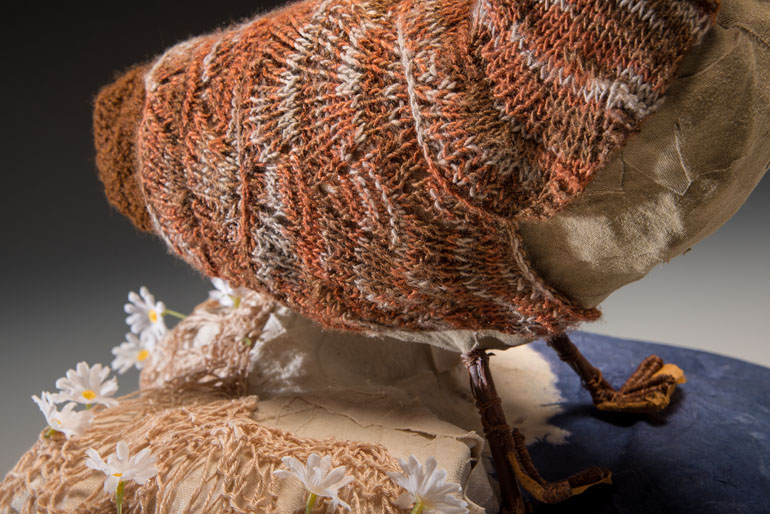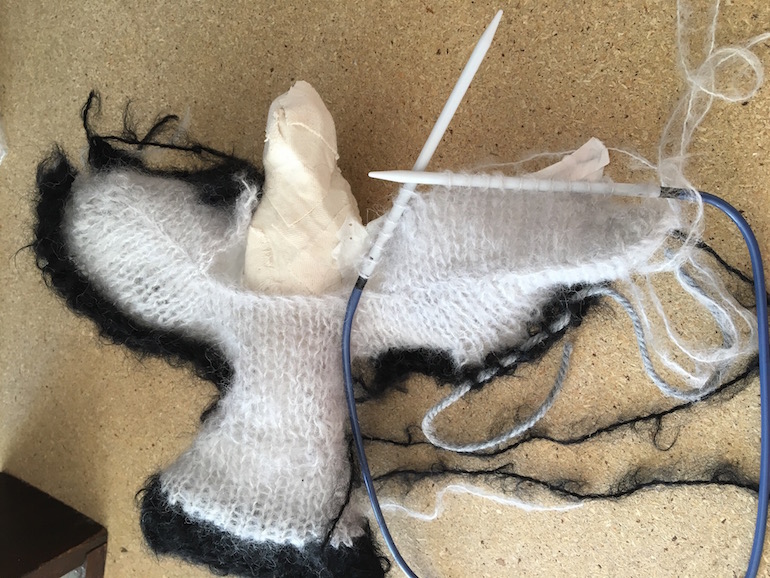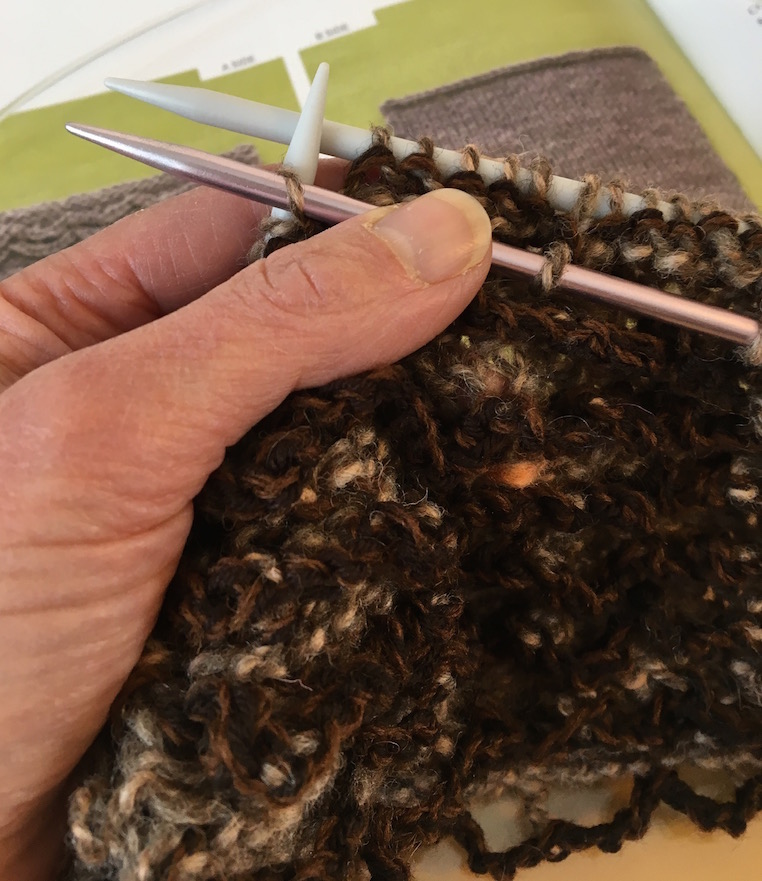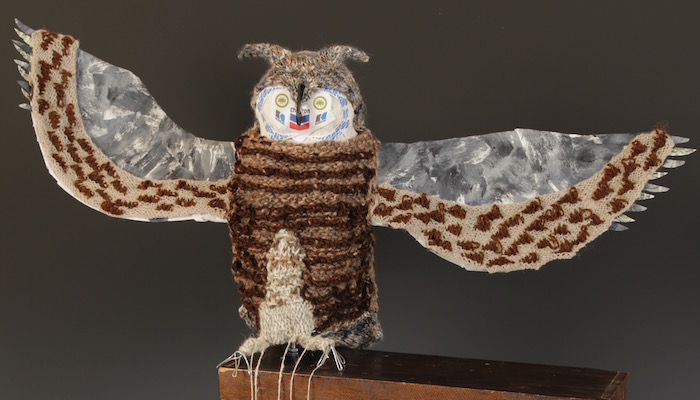
© 2018 Eve Jacobs-Carnahan, Insect Control (detail), handspun yarn, felted wool yarn, mulberry paper, grapevine, canvas, wire, 15 x 11 x 3 inches.
Capturing feathers
Every bird needs feathers. Creating the impression of feathers on my sculptures comes down to two factors: yarn and stitches.
Distinguishing birds by color
We notice the colors of bird feathers first. That’s the first element I examine when choosing a yarn for feathers. Since the yarns in my studio are sorted by color, I pull out the bin with the colors I need and start digging through. Commercial yarn companies produce multi-colored yarns designed to automatically knit up into stripes. These can be a terrific way to capture the dappled body of a multi-colored bird like the duck in Water’s Edge.

© 2018 Eve Jacobs-Carnahan, Water’s Edge (detail), wool yarn, linen yarn, mulberry paper, canvas, waxed linen, silk flowers, found objects, 13 x 14 x 14 inches. paulrogersphotography.com
Fluffy or crisp – yarns make the point
Feathers vary in size and texture too. Some are fluffy, some lie smooth, and some stand up stiffly. One way to evoke a soft feathery surface is with fluffy yarn. That’s what I used for the pigeons in my allegorical piece At the Expense of Democracy. I knit their pale grey bodies in a downy yarn blended from baby suri alpaca, mulberry silk. The yarn was called Andean Mist and it felt misty and light. I could imagine I was holding a baby bird as I knit. To complete the downy impression, I knit the tips of the wings and tail with black mohair yarn. The fuzzy halo of these yarns conceals any stitch detail, so a plain stockinette stitch shows them to best advantage.

© 2019 Eve Jacobs-Carnahan, At the Expense of Democracy (detail of pigeon in progress).
The woodpecker at the center of Insect Control is a small crisp bird. The pure black and white colors were what mattered most here. I used a crisp commercial black rayon yarn and a snowy white wool that I had spun from a smooth merino top. They were both relatively fine yarns so they knit up with small even stitches as you can see at the top of this page.
Stitches for a layered texture
To capture the wondrous chaos of the great horned owl in At the Expense of Democracy I combined multi-colored yarns with unusual stitch patterns. For the owl’s breast I dug to the bottom of my bin of brown yarns and found some peach and brown pole-striped handspun. Frankly, this chunky yarn was unattractive, the result of an early attempt at handspinning. But it was perfect for the owl. Over the top I layered ruffled stripes knit by holding two shades of darker brown yarns together. The ruffled curves are knit simultaneously with the background. The stitch pattern comes from Lynne Barr’s wonderful book Reversible Knitting. While these patterns are designed to be appealing on both the front and back sides, they are so inventive that I use them even if only one side will be visible.

© 2019 Eve Jacobs-Carnahan, At the Expense of Democracy (detail of body in progress)
The wings are based on a stitch pattern that creates a triangular checkerboard. The pattern is Drop Loop Steps, also from Reversible Knitting. I wanted the dark triangles to fan out toward the tips of the wings on each side, so I diagramed mirror images of the pattern. To achieve the checkered effect with many repetitions of the triangles, I used fingering weight yarns. By using solid colors, the stitch pattern is highlighted.

© 2019 Eve Jacobs-Carnahan, At the Expense of Democracy (detail)
There are many ways to create feathers. Making close observations of birds, playing with the materials, and adapting techniques coalesce to capture the impression of feathers.
So much variety and innovation Eve! It must be very rewarding when you land on the combo of yarn and stitch pattern that is just right for each particular bird.